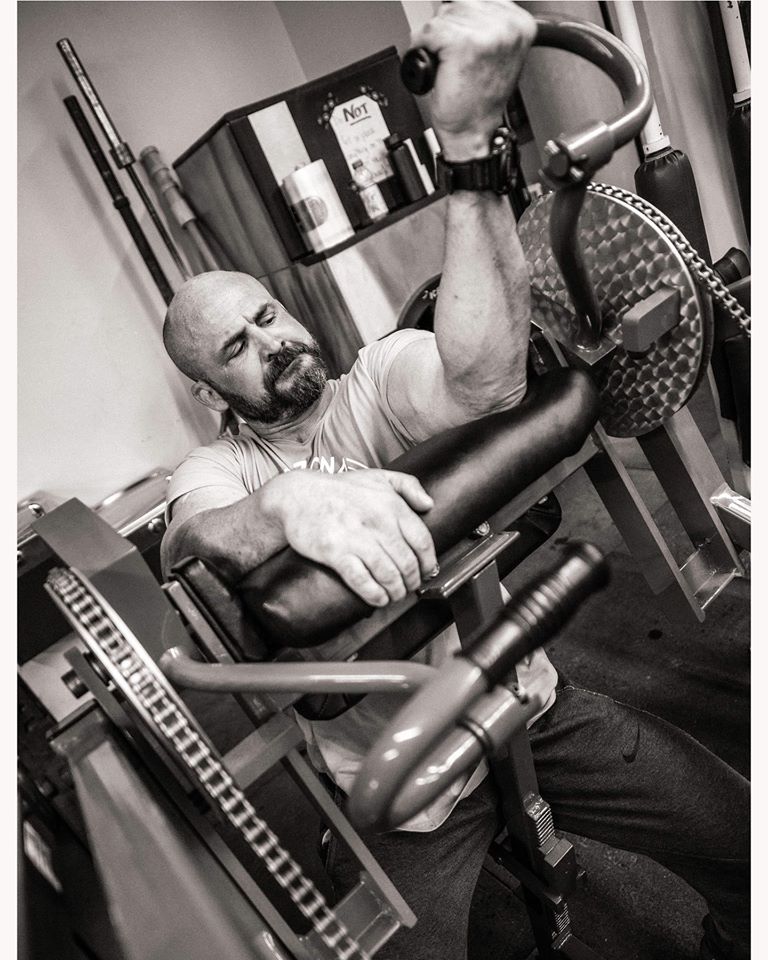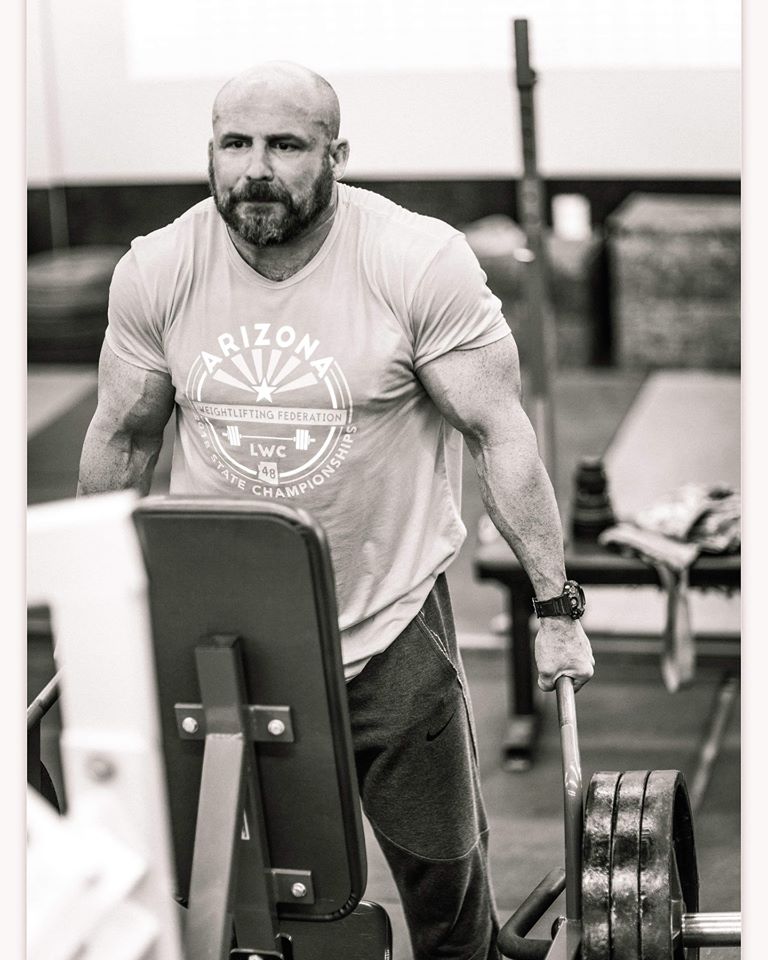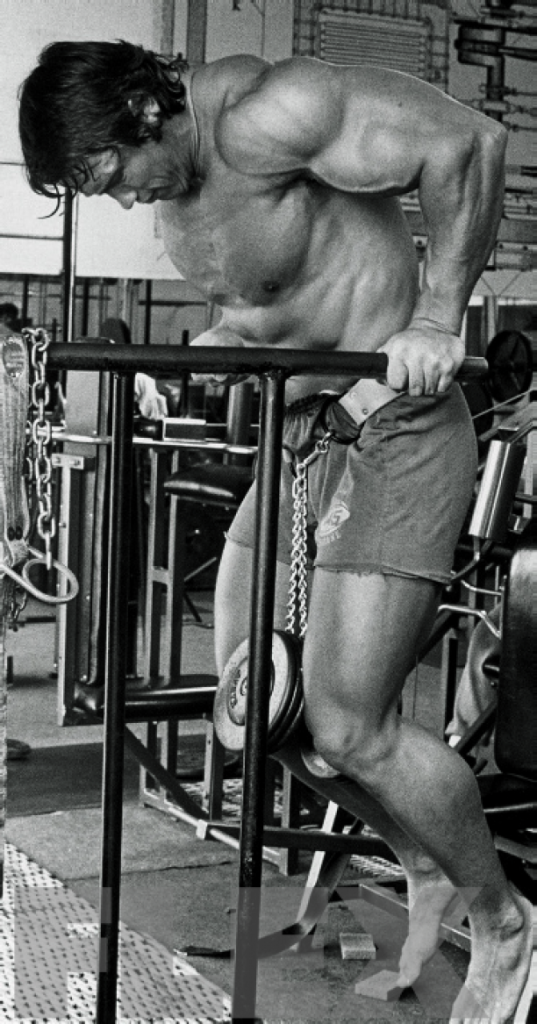In the most basic terms, Hypertrophy refers to an increase in the size of a…
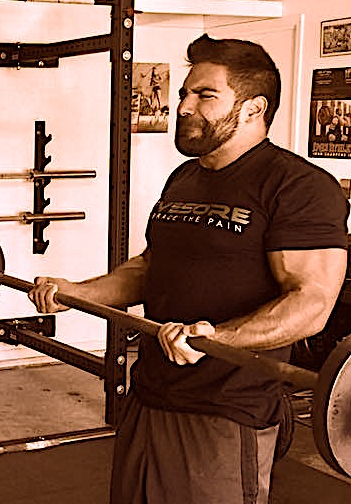
Augmenting Functional Fitness Training With Modified H.I.T.
The H.I.T. (High Intensity Training) method was popularized in the 1970’s by Nautilus Equipment inventor, Arthur Jones. The foundational principles of H.I.T. are intensity and efficiency. The goal is not to see how much we can train, but rather to see how effectively we can train.
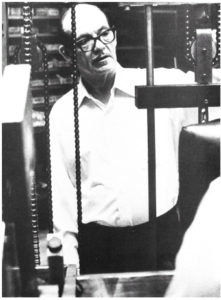
Intensity: Jones believed that intensity was the single most important factor in stimulating hypertrophy and increasing strength. The intent was that each exercise be pushed to momentary muscular failure (while maintaining movement quality). He also believed that performing exercises with little to no rest between them was crucial for eliciting a potent systemic stimulus.
–
Efficiency: Once the body has been exposed to adequate stimulus, any further exposure is simply a waste of energy and inhibits the body’s ability to recover and positively adapt. (Jones referred to one’s ability to recover and adapt as “Recovery Ability”)
–
“When the intensity of an exercise is increased, the amount of exercise must be reduced. When you train harder, you must train less.”
~Arthur Jones
~Arthur Jones
______________________________________________________________________
A basic overview of the H.I.T. exercise prescription:
1. Workouts should include the entire body.
2. Each exercise should be pushed to the point of muscular failure.
3. Selected resistance should allow for between 8 and 12 repetitions.
4. Training should be limited to 1-3 sets, per exercise.
5. Minimal rest should be permitted between exercises.
6. Movements should be performed in a controlled manner. (eliminate momentum in order to increase demand on the working muscles).
Double Progressive Overload:
1. Start by choosing a weight that allows for the completion of 8-12 reps at max effort.
2. Use the same weight for each workout until you are able to complete 12 reps.
3. At this point, increase the weight by 5%.
4. Once you are again able to complete 12 reps, increase weight by another 5%.
The beauty of this system is the simplicity and individualized rate of progression that it allows. It is referred to as “Double Progressive” because intensity is managed in two ways. First, the reps are increased until the top end of the established range is reached. At this point, the load is increased by roughly 5% as the second means of affecting intensity.
Example of a H.I.T. Workout
Push each exercise to failure. No rest between exercises.
15-20 Back Squat
8-12 Machine Pullover
8-12 Supinated Grip Pulldown
8-12 Chest Press
8-12 Stiff Legged Deadlift
8-12 Seated Row
8-12 Machine Dip
8-12 Barbell Curl
8-12 Wrist Curl
What Jones prescribed as the H.I.T. Method, evolved over time. He continued to move towards lower volume and higher intensities. He experimented with many means of increasing intensity. Several of the more notable methods include, Infimetric Resistance, Negative Only Training and Pre-Exhaustion Training.
–
“It took me twenty years to learn that two sets are better than four, and twenty more years to learn that one set is better than two.”
~Arthur Jones
~Arthur Jones
_________________________________________________________________________________
How does H.I.T. apply to functional fitness?
The H.I.T. methodology is most effective for stimulating hypertrophy and building tolerance to high intensity exercise. Pure H.I.T. training is best suited for bodybuilding (hypertrophy). That said, the methodology has value when applied appropriately to preparation for other sports. This article will address the potential applications of modified H.I.T.-style training for competitive functional fitness.
Including Modified H.I.T. workouts in your training can have the following benefits:
1) Increased upper body strength (particularly those without a history of strength training)
2) Improved stability of joints
3) Localized muscular endurance
4) Metabolic conditioning
5) Increased movement variety
Incorporating H.I.T. into Functional Fitness Training:Frequency: Optimal use of H.I.T. methodology for augmenting upper body/gymnastics training is in the range of 1-2 x week.
–
Order of Stimulus: The H.I.T. piece of a training session is often best placed near the conclusion of a training session due to the level of fatigue generated by H.I.T. workouts (with the exception of intentional pre-exhaustion training).
–
What H.I.T. doesn’t do well:
Development of Complex Skills: when training for skill, it is important to perform a large number of repetitions with perfect form at sub-maximal intensity. There is no way to replace the need for many repetitions when developing the nervous system’s capacity to repeatedly perform precise movements. For example, the sport of Weightlifting requires the ability to perform complex movements with heavy loads at high speeds. Low volume, high intensity training simply isn’t an effective method of developing skill.
–
Build tolerance for high volume work: many sports require the ability to tolerate a large volume of work. This runs contrary to the H.I.T. philosophy of low volume high intensity.
________________________________________________________________________________
When using H.I.T. methodology to augment training for competitive functional fitness, it is often appropriate to modify workouts to suite our purposes. Modified or abbreviated workouts can be used to develop specific strength, improve local muscular endurance or simply as a substitute for gymnastics training.
–
Examples of Modified or Abbreviated H.I.T. Workouts:
“Upper Body Combo”
Push each exercise to failure. No rest between exercises.
8-12 Weighted Dip
8-12 Pullover
8-12 Weighted Chin-up
“Upper Body Combo” (strength emphasis)
Push each exercise to failure. No rest between exercises.
5-8 Weighted Dip
8-12 Pullover
5-8 Weighted Chin-up
*note the decreased rep range of the multiple joint exercises.
“Upper Body Combo” (using machines)
Push each exercise to failure. No rest between exercises.
8-12 Machine Dip
8-12 Machine Pullover
8-12 Supinated Grip Pulldown
*note the use of machines for the multiple joint exercises.
_____________________________________________________________________________
A functional fitness training session that includes H.I.T. may be structured in the following manner:
With a partner for time:
3-5-3-7-3-5-3
Over the Box Jump 30/24
Ring Muscle-up
(alternate rounds with partner. each set unbroken)
Clean + Front Squat + Jerk
Build to a heavy set of 1+1+1
80% of heavy set: 5 (1+1+1)
*follow each set with a 250m row
2 rounds:
Push each exercise to failure. No rest between exercises.
8-12 Weighted Dip
8-12 Pullover
8-12 Weighted Chin-up
(rest 2:00 between rounds)
3 rounds:
Push each exercise to failure. No rest between exercises.
10-15 Face Pulls
10-15 Triceps Extension
10-15 Plate Raises
30-50 Band Pull Apart
(rest 1:00 between rounds)
________________________________________________________________________________
Several Methods of Structuring H.I.T. Workouts:
–
Pre-Exhaustion: single-joint movement precedes a multiple-joint movement involving the same muscles. For example, begin with a single-joint exercise for the Latissimus Dorsi. This movement pre-exhausts the lat muscle, allowing for a greater stimulus of the lat muscles during the multiple-joint exercises to follow. (This is important because the ability to work the lats is often limited by the much smaller biceps during multiple-joint upper body pulling exercises).
–
–
Compounding Sets: training method in which several movements that work the same muscle or muscles are completed in quick succession. Compounding sets are an effective means of placing high levels of stress on a particular muscle or muscle group. The downside of compounding is the effect of fatigue on the muscle’s ability to produce work, which limits the load and volume of work performed by the targeted muscle group.
–
Push/Pull: alternate exercises between opposing muscle groups. There are two primary benefits to this type of structure: It allows for high levels of systemic intensity (more work in less time), and it allows for some recovery of muscles while the opposing muscle groups are working. Systemic intensity is important because it creates a large amount of metabolic stress and thus more overall stimulus.
–
Largest to smallest: In many cases, it makes sense to order the exercises from largest to smallest. The benefit of this structure is that the largest, most potent exercises are performed in a fresh state, when the greatest effort can be given to them. An example of working largest to smallest: deadlift, pull-up, biceps curl, wrist curl.
–
Variation of Reps: Reps can be altered depending on the exercise and purpose. Jones prescribed 8-12 reps for most upper body exercises. He often prescribed higher reps for training the lower body (15-20 reps). In the case of weighted pull-ups, weighted dips and 1.5 rep exercises, reducing the reps can improve the workout by increasing the quality or load used for a lift. 5-8 reps is an appropriate rep range for weighted pull-ups and weighted dips. In the case of 1.5 rep exercises, 3-5 reps is a good place to start.
________________________________________________________________________________
Examples of Various Workout Structures:
“Upper Body Push”
2 rounds:
Push each exercise to failure. No rest between exercises.
8-12 Dumbbell Fly
8-12 Incline Bench Press
8-12 Machine Dip
(rest 3:00 between rounds)
3 rounds:
Push each exercise to failure. No rest between exercises.
8-12 Lateral Raise
8-12 Standing Press
8-12 Machine Dip
(rest 2:00 between rounds)
2 rounds:
Push each exercise to failure. No rest between exercises.
8-12 Pec Deck
8-12 Weighted Dip
8-12 Pec Deck
Max Rep Bodyweight Dip
(rest 3:00 between rounds)
2 rounds:
Push each exercise to failure. No rest between exercises.
8-12 Lateral Raise
5-8 Standing Press
8-12 Dumbbell Fly
8-12 Chest Press
8-12 Triceps Extension
(rest 5:00 between rounds)
________________________________________________________________________________
“Upper Body Pull”
2 rounds:
Push each exercise to failure. No rest between exercises.
8-12 Pullover
8-12 Supinated Grip Pulldown
8-12 Bent Row
(rest 3:00 between rounds)
2 rounds:
Push each exercise to failure. No rest between exercises.
8-12 Pullover
5-8 Weighted Chin-up
8-12 Pullover
(rest 3:00 between exercises)
2 rounds:
Push each exercise to failure. No rest between exercises.
8-12 Pullover
8-12 Supinated Grip Pulldown
8-12 Seated Row
8-12 Shoulder Shrug
(rest 3:00 between rounds)
2 rounds:
Push each exercise to failure. No rest between exercises.
8-12 Pullover
8-12 Weighted Chin-up
8-12 Bent Lateral Raise
8-12 Seated Row
8-12 Barbell Curl
(rest 3:00 between rounds)
_______________________________________________________________________________
“Upper Body Combo”
These workouts combine “push” and “pull” exercises. This format is a potent and efficient way to address upper body training.
2 rounds:
Push each exercise to failure. No rest between exercises.
8-12 Weighted Dip
8-12 Pullover
8-12 Weighted Chin-up
(rest 2:00 between rounds)
2 rounds:
Push each exercise to failure. No rest between exercises.
8-12 Pullover
8-12 Weighted Chin-up
8-12 Weighted Dip
8-12 Barbell Curl
(rest 2:00 between rounds)
1 round:
Push each exercise to failure. No rest between exercises.
8-12 Bench Press
8-12 Dumbbell Pullover
8-12 Supinated Grip Pulldown
8-12 Machine Dip
8-12 Seated Row
8-12 Triceps Extension
8-12 Barbell Curl
8-12 Wrist Curl
________________________________________________________________________________
“Two Part Workouts”
Perform the first part of the workout, take prescribed rest, and then complete the second part of the workout.
2 rounds:
Push each exercise to failure. No rest between exercises.
8-12 Pec Deck
8-12 Machine Dip
8-12 Triceps Extension
(rest 1:00)
8-12 Pullover
8-12 Supinated Grip Pulldown
8-12 Barbell Curl
(rest 3:00 between rounds)
_________________________________________________________________________________
Example of a H.I.T. Upper Body Workout:
The following represents a complete upper body training session. (this could be used in place of a gymnastics training session)
2 rounds:
Push each exercise to failure. No rest between exercises.
8-12 Pullover
8-12 Supinated Grip Pulldown
8-12 Barbell Curl
(rest 2:00 between rounds)
2 rounds:
Push each exercise to failure. No rest between exercises.
8-12 Pec Deck
8-12 Machine Dip
8-12 Triceps Extension
(rest 2:00 between rounds)
2 rounds:
Push each exercise to failure. No rest between exercises.
8-12 Dumbbell Hammer Curl
8-12 Triceps Extension
30-50 Gripper
(rest 1:00 between rounds)
2 rounds:
Push each exercise to failure. No rest between exercises.
15-20 Face Pull
10-15 Plate Raise
30-50 Band Pull Apart
(rest 1:00 between rounds)
-Bachelor of Scie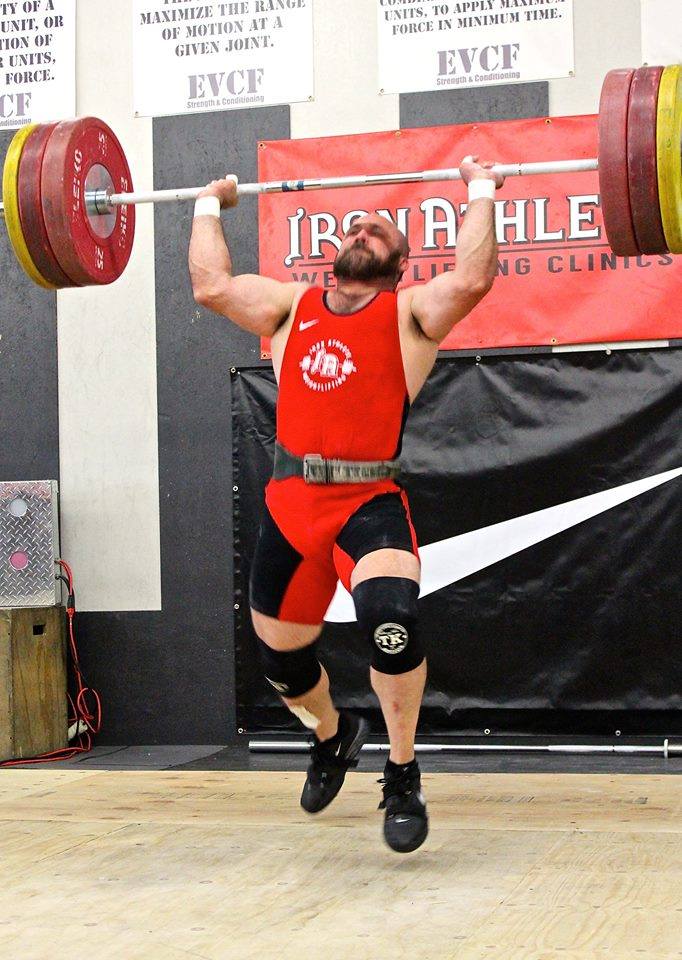 nce, Auburn University 1997
nce, Auburn University 1997
-Master of Education, Northern Arizona University 2005
-USA Weightlifting Club Coach 2001
-CrossFit Level 1 Instructor 2009
-USA Weightlifting National Coach 2012
-EVCF Regional Team Coach 2013, 2014, 2015, 2016, 2017
-EVCF CrossFit Games Team Coach 2014
-Masters National Record Holder: Snatch 130kg & Total 287kg (105kg 40-44)
-5 x American Masters Weightlifting Champion
-5 x American Masters – Best Lifter (2 x 35-39yrs, 3 x 40-44yrs)
-3 x Masters Nationals Weightlifting Runner-up
-President of Arizona Weightlifting Federation – LWC 48, 2016-current
